Going Beyond Experiment
If you did this exercise in the Experiment Tenant, give it a try in a Production Tenant, if you have one.
Step 1
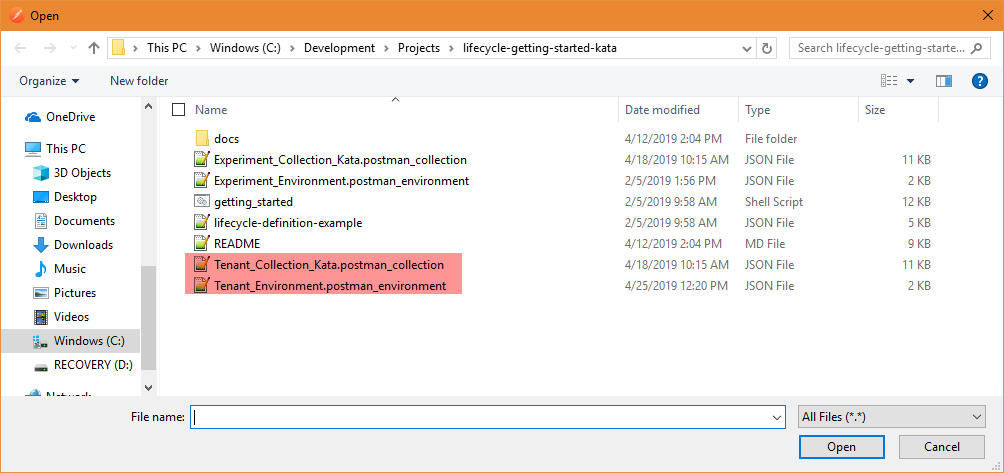
For our first step, we will want to import our collection and environment files, Tenant_Collection.postman_collection and Tenant_Enviroment.postman_environment respectively. For a reminder how to do this, refer to our Import Postman Collection and Import Postman Environment Variables documentation.
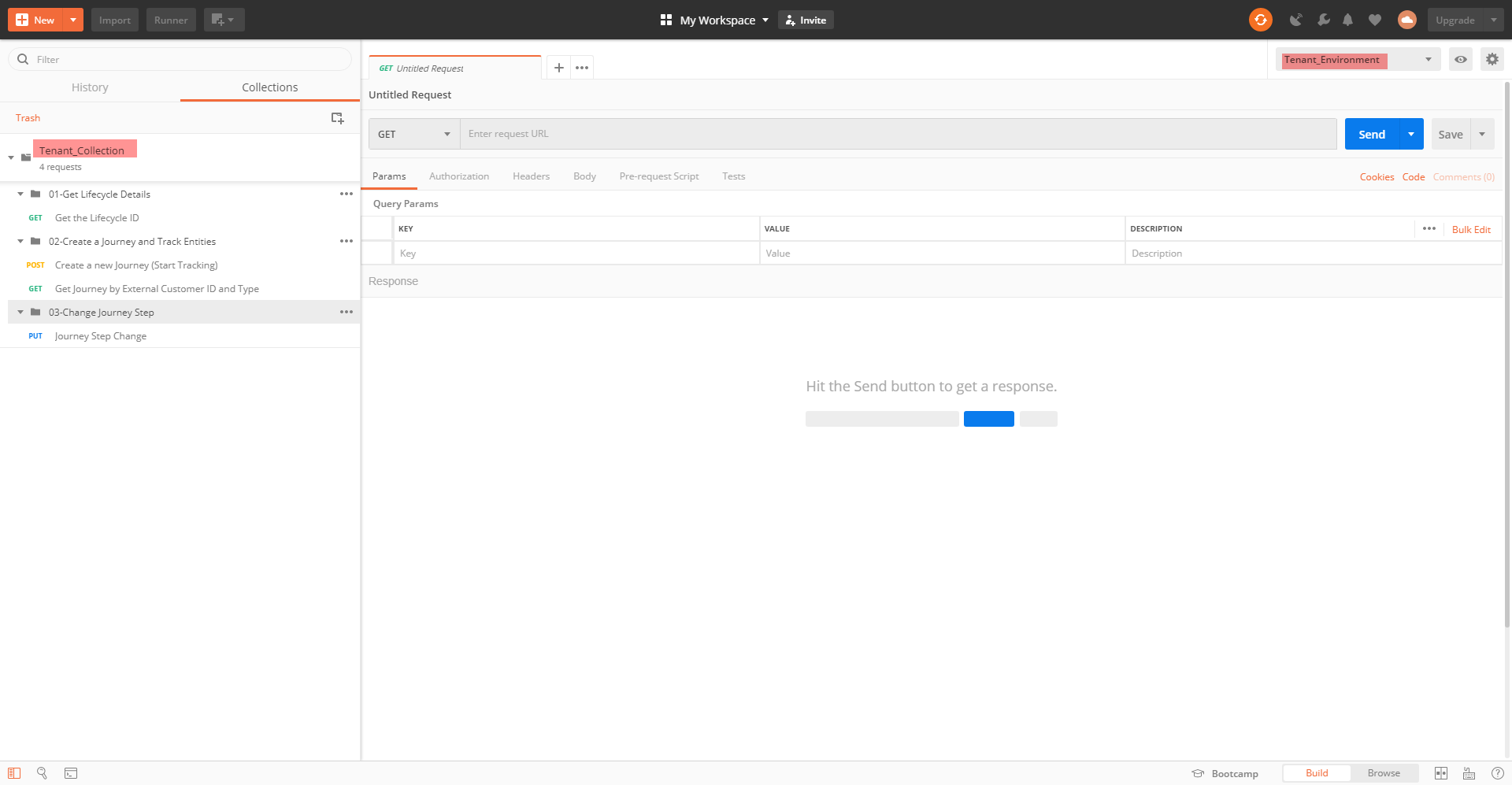
After which, we can verify that our new collection and environment have been added to postman.
Step 2
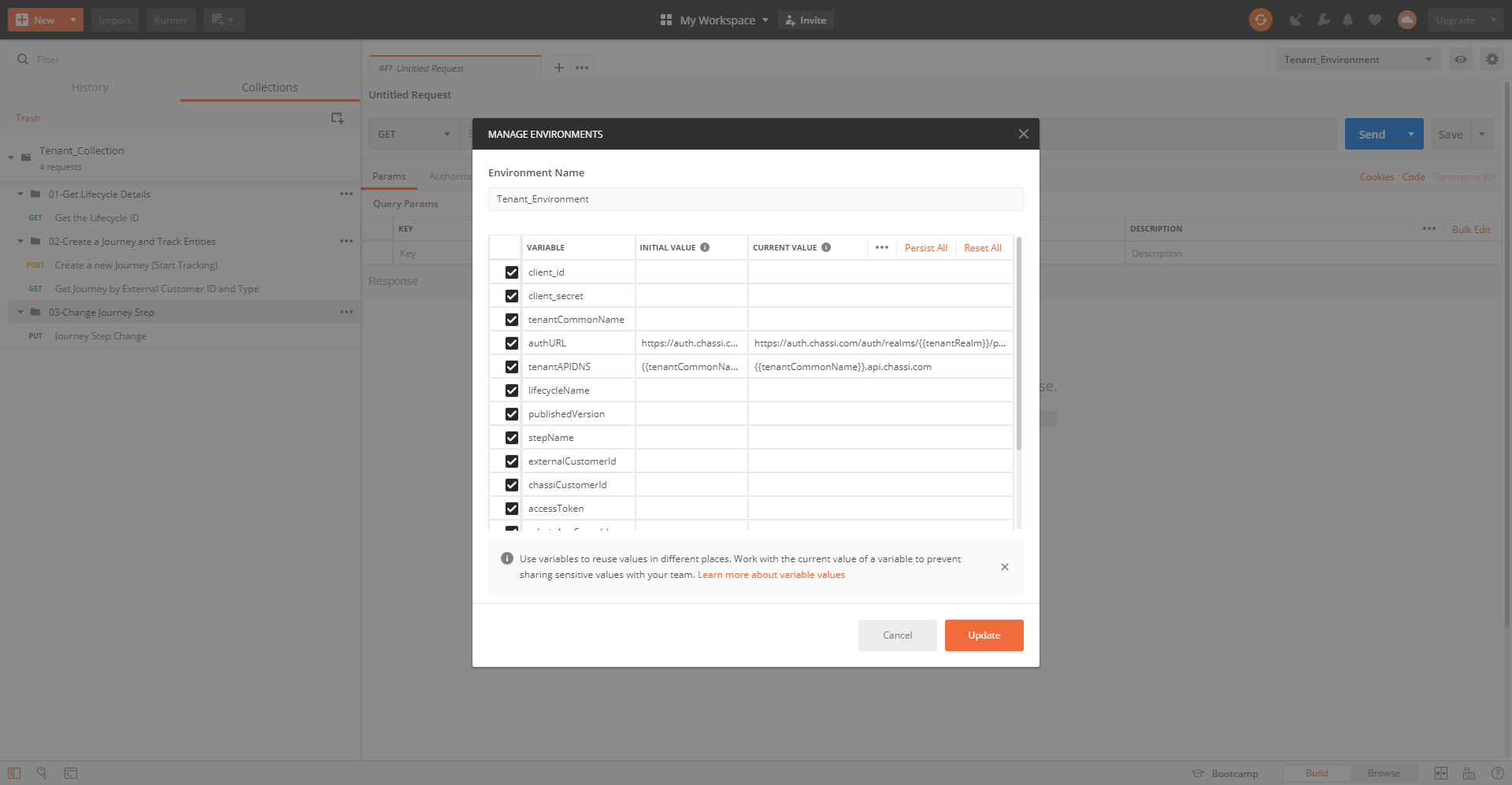
Next we will want to update our environment variables. This process will be very similar to the Update your Postman Environment Variables documentation. The exception to this will be for the variables client_id, client_secret, tenantCommonName, authURL, and tenantAPIDNS.
client_id and client_secret replace the username and userPassword variables from the document. These values are the client credentials given for your service account.
Step 3
For tenantCommonName, authURL, and tenantAPIDNS, we will follow a similar procedure as explained in steps 4 - 5 of Update your Postman Environment Variables
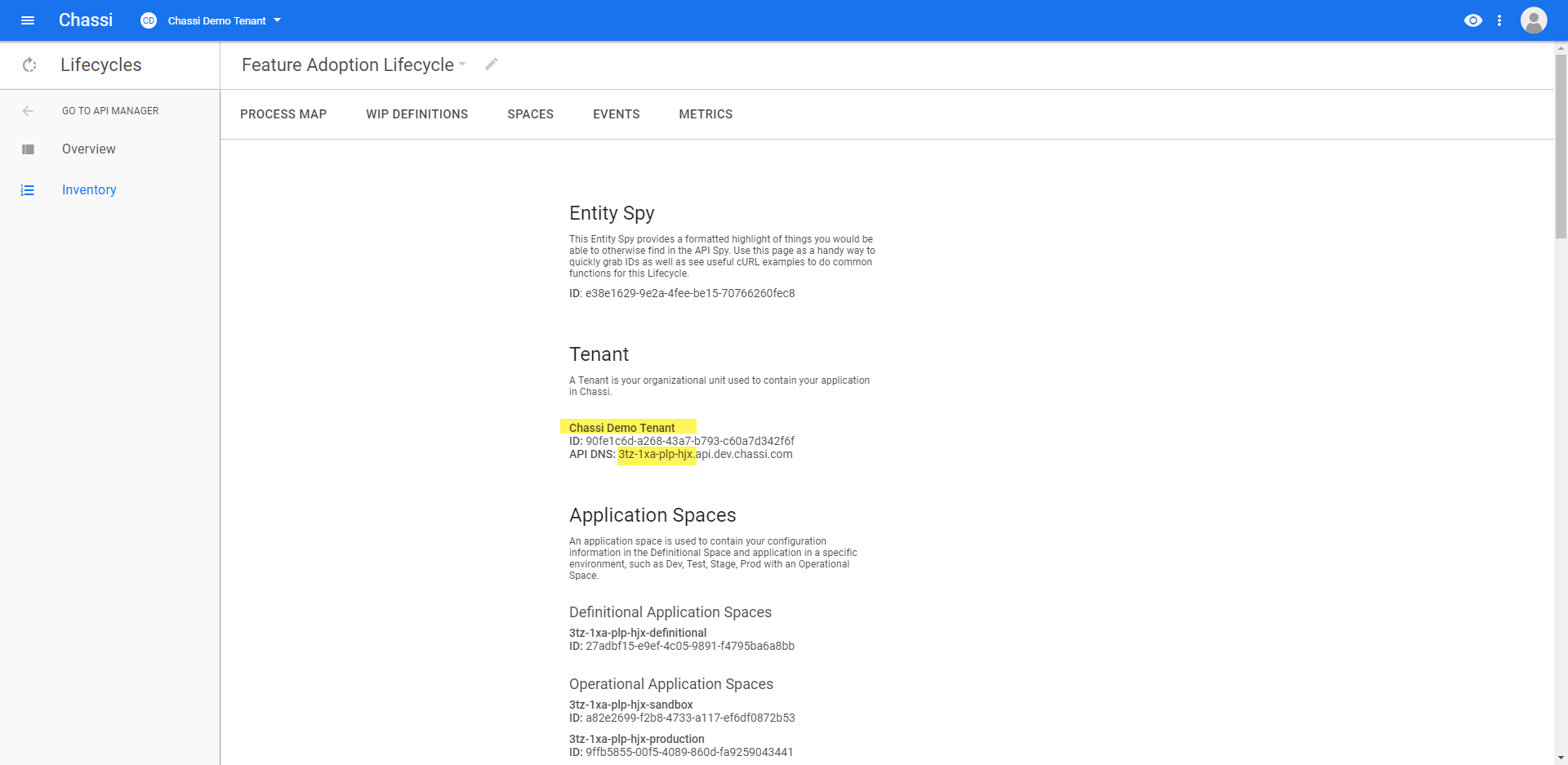
Here, we are making sure we know what tenant we want before getting the information from the API spy. For this example, our tenant is named Chassi Demo Tenant.
From the above json from Entity spy, we will want to record our tenantCommonName) from the Chassi Demo Tenant tenant, the prefix of API DNS, which is 3tz-1xa-plp-hjx in our case.
Now that we have our tenantCommonName, we can fill out our tenantAPIDNS and authURL variables. tenantAPIDNS is given to us as API DNS and for authURL we will want to fill in the {{tenantCommonName}} with our actual value... i.e:
Before:
authURL = https://auth.chassi.com/auth/realms/{{tenantCommonName}}/protocol/openid-connect/token
After:
authURL = https://auth.chassi.com/auth/realms/3tz-1xa-plp-hjx/protocol/openid-connect/token
Step 4
As noted in Step 6 of Update your Postman Environment Variables, we showed a case where the Operational and Definitional application spaces were the same. The below screenshots show when they are not and what to expect when retrieving their IDs.
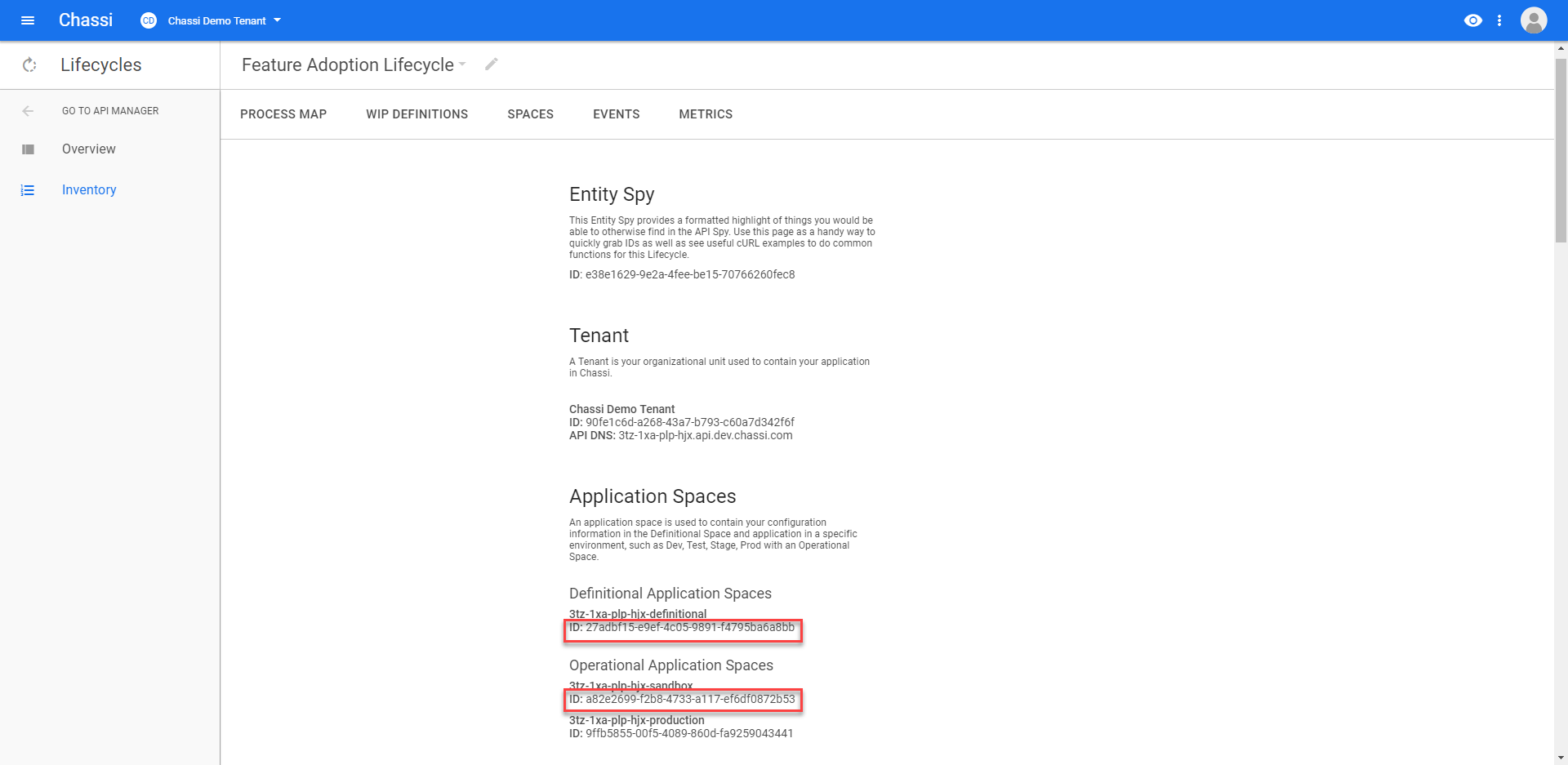
Updated over 6 years ago
Go on to the next steps to learn what happens after your Entities start traversing Journeys.
